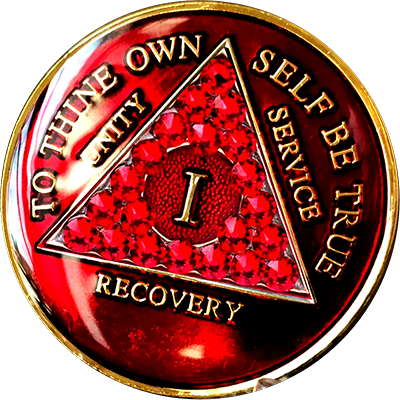Gurdas Maan stands as a towering figure in Punjabi music, bridging traditional folk with contemporary themes across his four-decade career. While digital platforms now dominate music consumption, his vinyl records from the 1980s and early 1990s remain prized artifacts that capture the raw energy and cultural significance of his early work. These physical recordings document the evolution of an artist who would redefine Punjabi music while preserving the authenticity of his live performances and studio craftsmanship.
The Early Vinyl Era: Foundation of a Legend
Gurdas Maan's first vinyl releases appeared during a transformative period for Punjabi music. His debut album Dil Da Mamla (1980) and subsequent early works like Mamla Gadbad Hai (1982) were pressed on vinyl by HMV and other regional labels. These records showcase several distinctive qualities:
- Live instrumentation featuring harmonium, tumbi, and dholak in pure analog recordings
- Unfiltered vocal performances with minimal production editing
- Lyrical depth addressing social issues, romance, and Punjabi identity
Unlike later digital reissues, these original pressings preserve the dynamic range of Maan's powerful voice and the organic interplay between musicians. Collectors particularly seek his 1984 LP Challa, which includes the seminal title track recorded live at EMI Studios in Mumbai.
Signature Albums and Their Vinyl Legacy
Several of Maan's vinyl releases have attained legendary status among collectors:
1. Apna Punjab Hove (1985)
This concept album celebrating Punjabi culture features richer production while maintaining folk roots. The vinyl version contains subtle mixing differences from later CD releases, particularly in the dholak percussion tracks.
2. Ki Banu Duniya Da (1988)
Pressed on translucent red vinyl in limited quantities, this philosophical work includes Maan's commentary on materialism. The physical packaging features handwritten lyrics—a detail lost in digital formats.
3. Pind Diyan Galliyan (1991)
One of the last major Punjabi albums originally released on vinyl before the CD takeover. The warmth of analog recording complements its nostalgic village themes.
The Collector's Market: Rarity and Value
Original Gurdas Maan vinyl records have appreciated significantly due to:
- Limited pressings - Many albums had under 5,000 copies
- Cultural significance - Documents Punjabi diaspora experiences
- Condition scarcity - Most surviving copies show play wear
Current market observations:
- Common titles (e.g., Dil Da Mamla) sell for $50-$100
- Rare pressings (e.g., Ki Banu Duniya Da colored vinyl) fetch $300+
- Test pressings and promo copies occasionally surface at auction
Technical Superiority of Analog Recordings
Audiophiles argue that Maan's vinyl releases offer sonic advantages over digital versions:
- Dynamic range - Analog captures vocal nuances lost in compression
- Natural reverb - Especially evident in live recordings
- Frequency response - Warmer low-end from original master tapes
The 1987 album Waris Shah demonstrates this best, with its complex arrangements benefiting from vinyl's full frequency spectrum.
Preservation and Rediscovery
Recent developments have renewed interest in Maan's vinyl catalog:
- Archival projects by Punjab Digital Library are digitizing rare pressings
- Boutique reissues from European labels like Finders Keepers
- DJ culture sampling vinyl-exclusive instrumental breaks
Maan himself has acknowledged the vinyl revival, telling The Tribune in 2019: "Those old records were made with a different intention—to be experienced as complete works, not just singles."
Collecting Guide
For those seeking authentic Gurdas Maan vinyl:
Best sources:
- Delhi's Palika Bazaar specialty shops
- UK-based South Asian record fairs
- Canadian Punjabi community estate sales
Authentication tips:
- Verify HMV/EMI catalog numbers in dead wax
- Check for original inner sleeves with lyrics
- Prefer records stored in dry climates to prevent mold
Essential care:
- Store vertically in anti-static sleeves
- Clean with carbon fiber brush before playback
- Use high-quality turntable (minimum Ortofon cartridge)
Cultural Impact Beyond Music
Maan's vinyl legacy extends beyond audio:
- Album artwork documents evolving Punjabi graphic design
- Liner notes reveal historical context missing from streaming
- Physical ownership maintains cultural connection for diaspora youth
His records frequently surface in exhibitions like the Punjab Folk Museum's music history displays.
The Future of the Catalog
While streaming dominates, vinyl persists as the definitive format for experiencing Maan's early genius. Upcoming trends suggest:
- Deluxe box sets may compile his 1980s work
- Remastered editions could utilize original analog tapes
- Interactive vinyl with QR-linked content may emerge
For collectors and casual listeners alike, these vinyl records aren't merely relics, but resonant artifacts that continue to speak to the Punjabi experience with unmatched authenticity. Their survival ensures future generations can discover Maan's work as it was originally created—not as algorithmically segmented tracks, but as carefully sequenced artistic statements meant to be experienced from first groove to last.
Bollywood Vinyl Records Classical Vinyl Records Devotional Vinyl Records Dialogue Vinyl Records Dj Remix Vinyl Records English Vinyl Records Film Hits Vinyl Records Ghazals Vinyl Records Instrumental Vinyl Records Non Filmi LP Records Punjabi Vinyl Records Rare Vinyl Records Online Vinyl Shop Online Chardham Hotels in chardham
































